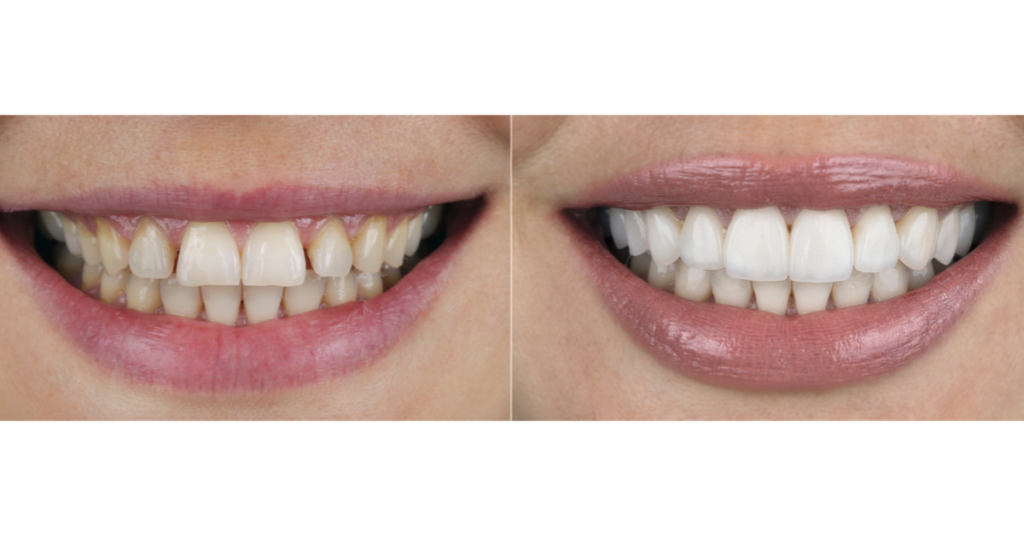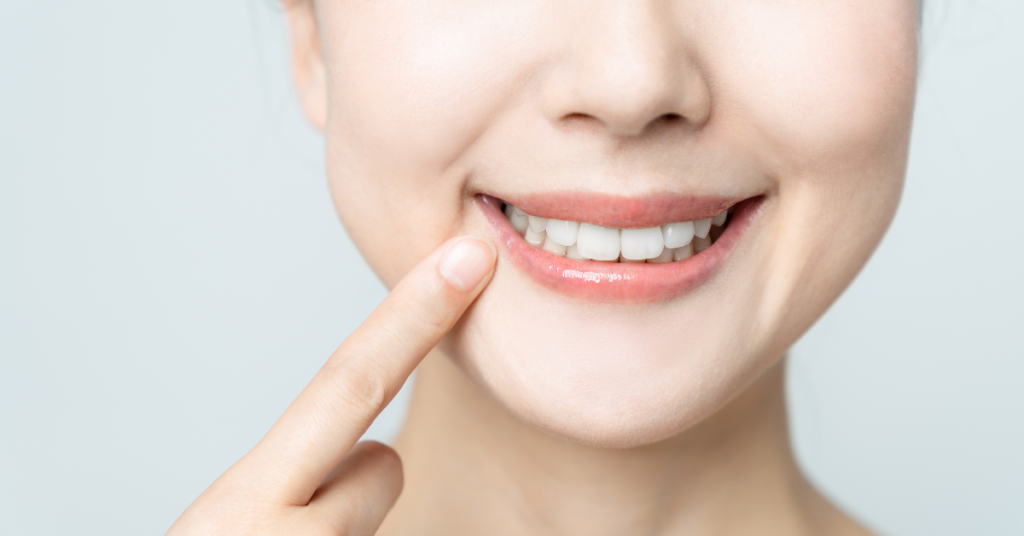
Introduction to Dental Bonding
Dental bonding, also known as tooth bonding, is a cosmetic dental procedure that involves applying a tooth-colored resin material (a durable plastic) to the surface of a tooth. This resin is then hardened with a special curing light, effectively “bonding” it to the tooth. Dental bonding can be used to improve the appearance of your teeth by repairing chips, cracks, gaps, and discoloration.
Dental bonding has become an increasingly popular option for several reasons. Firstly, it’s an affordable cosmetic solution compared to other treatments like veneers or crowns. Secondly, it’s a minimally invasive procedure that doesn’t require extensive tooth preparation or removal of enamel. Finally, dental bonding is a versatile treatment that can address various dental issues, making it an attractive option for many patients.
Common Applications of Dental Bonding

Repairing Chipped or Cracked Teeth
One of the most common uses of dental bonding is to repair minor chips or cracks in teeth. The composite resin material can be sculpted and shaped to fill in these imperfections, restoring the tooth’s appearance and functionality. This is a great alternative to more invasive procedures like crowns or veneers for minor damage.
Closing Gaps Between Teeth
Dental bonding can also be used to close small gaps or spaces between teeth. The resin material is applied and shaped to create a seamless appearance, effectively closing the gap. This can be a more affordable and faster alternative to orthodontic treatment for minor spacing issues.
Changing the Shape or Length of Teeth
Another application of dental bonding is to alter the shape or length of teeth. The composite resin can be used to build up or reshape teeth that are misshapen, worn down, or shorter than desired. This can improve the overall appearance and symmetry of your smile.
Improving Discolored Teeth
If you have teeth that are stained or discolored, dental bonding can be a solution. The tooth-colored resin material can be applied over the discolored areas, effectively masking the stains and providing a more uniform, brighter appearance. This can be a more affordable alternative to veneers in some cases.
The Advantages of Dental Bonding
Minimally Invasive Nature
One of the biggest advantages of dental bonding is its minimally invasive nature. Unlike procedures like veneers or crowns, which require significant tooth preparation and removal of enamel, dental bonding typically doesn’t require extensive tooth alteration. This means that more of your natural tooth structure is preserved, and the procedure is generally less uncomfortable.
Cost-Effectiveness
Dental bonding is also a cost-effective option compared to other cosmetic dental treatments. While the exact cost can vary depending on the extent of work needed and your location, bonding is generally more affordable than procedures like veneers or crowns. This makes it an excellent option for patients on a budget who want to improve their smile.
Reversible and Non-Permanent
Another advantage of dental bonding is that it’s reversible and non-permanent. Unlike veneers or crowns, which involve permanently altering the tooth structure, bonding material can be removed or replaced if needed. This allows for future changes or alternative treatments if desired.
Quick and Efficient Process
Dental bonding is also a relatively quick and efficient process. In most cases, it can be completed in a single dental visit, with no extensive recovery time required. This is a shorter treatment time compared to other cosmetic procedures, making it convenient for patients with busy schedules.
The Dental Bonding Procedure

Consultation and Evaluation
The first step in the dental bonding process is a consultation and evaluation with your dentist. During this appointment, you’ll discuss your goals and desired outcomes, and your dentist will examine your teeth and overall oral health. This evaluation helps determine if bonding is the right solution for you and what specific areas need to be addressed.
Tooth Preparation
Once the consultation is complete, your dentist will prepare the tooth (or teeth) for bonding. This typically involves cleaning the tooth surface and roughening it slightly to help the bonding material adhere properly. Your dentist may also apply a conditioning liquid to further improve adhesion.
Shade Selection
Next, your dentist will carefully select the shade of the composite resin material to match the natural color of your teeth. This ensures that the bonded areas blend seamlessly with your existing teeth, creating a natural-looking result.
Application and Sculpting
With the shade selected, your dentist will begin applying the composite resin material to the tooth. This putty-like material is sculpted and shaped to achieve the desired form, whether it’s filling a chip, closing a gap, or reshaping the tooth.
Curing and Polishing
Once the composite resin is sculpted to the desired shape, your dentist will use a special curing light to harden and bond the material to your tooth. After curing, the bonded area will be trimmed, shaped, and polished to create a smooth, natural-looking finish that blends seamlessly with your existing tooth.
Caring for Bonded Teeth

Proper Oral Hygiene
Proper oral hygiene is essential for maintaining the longevity of your dental bonding. This includes brushing twice a day with a soft-bristled toothbrush and flossing daily. It’s also important to avoid staining foods and beverages, especially in the first 48 hours after the procedure, as the bonding material can be susceptible to staining during this initial period.
Dietary Precautions
In addition to good oral hygiene, you’ll need to take some dietary precautions to protect your bonded teeth. Avoid hard or sticky foods that could potentially damage or dislodge the bonding material. It’s also best to refrain from chewing on hard objects or ice, as this can cause chips or cracks in the bonding.
Regular Dental Checkups
Regular dental checkups and professional cleanings are crucial for monitoring the condition of your dental bonding and overall oral health. Your dentist can identify any issues or wear and tear on the bonding material and recommend appropriate maintenance or touch-ups if needed.
Conclusion
Dental bonding is a versatile, affordable, and minimally invasive cosmetic dental procedure that can address a wide range of dental issues, from chips and cracks to gaps and discoloration. It offers several advantages, including preserving more of your natural tooth structure, being cost-effective, and allowing for future changes or alternative treatments. However, proper care and maintenance are essential for ensuring the longevity of your dental bonding.
If you’re considering dental bonding, it’s crucial to consult with a qualified and experienced dental professional. During your consultation, your dentist will evaluate your specific needs, discuss your goals and expectations, and determine if bonding is the most suitable option for you.
Your dentist will also provide personalized advice on the procedure, potential risks or limitations, and what you can expect in terms of results and maintenance. They may also recommend alternative or complementary treatments, depending on your unique dental situation.
Ultimately, dental bonding can be an accessible and effective solution for improving the appearance of your smile and boosting your self-confidence. By addressing imperfections like chips, cracks, gaps, and discoloration, bonding can help you achieve a more attractive, natural-looking smile that you can feel proud to show off.
With proper care and maintenance, the results of dental bonding can last for years, allowing you to enjoy a beautiful, confident smile for the long term. So, if you’re looking for a way to enhance your smile without breaking the bank, consider discussing dental bonding with your dentist and exploring this versatile cosmetic solution.
By investing in your smile, you’re not only improving your appearance but also potentially improving your overall confidence and quality of life. A beautiful, healthy smile can open doors and create lasting positive impressions, making dental bonding a worthwhile investment for many individuals.
